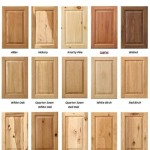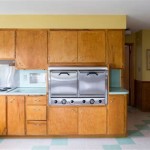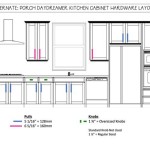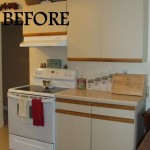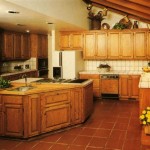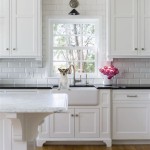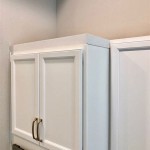How To Attach Kitchen Cabinets to a Brick Wall
Attaching kitchen cabinets to a brick wall presents unique challenges due to the material's hardness and irregular surface. Unlike drywall, brick requires specialized techniques and tools to ensure secure and lasting installation. This article outlines the essential steps and considerations for attaching kitchen cabinets to a brick wall, providing a comprehensive guide for DIY enthusiasts and contractors.
1. Preparation: Assessing the Wall and Planning the Layout
Before embarking on the installation, a meticulous assessment of the brick wall is crucial. This involves identifying any existing imperfections, including cracks, chips, or uneven surfaces. These irregularities could hinder the installation process and potentially compromise the stability of the cabinets. If present, address these issues by utilizing a suitable patching compound or mortar depending on the severity of the damage.
Once the wall is evaluated, a precise layout for the cabinets is essential. This step involves determining the placement of each cabinet and ensuring adequate spacing for functionality and aesthetics. Utilize a level to maintain straight lines and ensure that the cabinets are installed at the desired height. This planning stage is critical for achieving a cohesive and visually appealing kitchen design.
2. Marking and Drilling: Creating Secure Anchoring Points
With the layout in place, the next step involves marking the locations for drilling holes for the cabinet mounting hardware. Utilize a pencil or marker to clearly indicate the points where the screws or anchors will be inserted. It is recommended to pre-drill holes slightly smaller than the diameter of the screws to prevent the brick from cracking during installation. This step ensures that the cabinet mounting hardware is securely embedded in the brick wall.
For optimal stability, consider using specialized anchors designed for brick walls. These anchors come in various sizes and types, each suited for specific applications and weight capacities. Examples include toggle bolts, expansion anchors, or sleeve anchors. Choose anchors that are compatible with the cabinet weight and the structural integrity of the brick wall. These anchors provide a reliable means to distribute the load and ensure a secure connection between the cabinets and the wall.
3. Installing the Cabinets: Ensuring Stability and Alignment
With the anchoring points prepared, the cabinets can be installed. Begin by aligning the cabinets with the marked locations, ensuring they are level and plumb. Use shims to adjust the cabinet position and ensure a flush fit against the wall. Once positioned correctly, insert the mounting screws or anchors into the pre-drilled holes. Tighten the screws securely, ensuring that the cabinets are firmly attached to the brick wall.
It is essential to check the stability and alignment of the cabinets throughout the installation process. Use a level and a measuring tape to verify that the cabinets are mounted correctly and securely. This step ensures that the cabinets are properly installed and will not sag or shift over time. Additionally, consider using a stud finder to locate wall studs, providing additional support for heavier cabinets.
4. Additional Considerations: Avoiding Common Mistakes
While attaching kitchen cabinets to a brick wall may seem straightforward, several common mistakes can compromise the installation. One crucial aspect is avoiding drilling into electrical wires or plumbing lines. Before drilling, utilize a stud finder and a voltage detector to identify potential hazards and ensure a safe installation process. Additionally, avoid using standard drywall anchors on brick walls, as they may not provide sufficient support for the weight of the cabinets. Select specialized brick anchors or consult a professional for guidance on appropriate anchoring techniques.
Finally, consider the weight of the cabinets before selecting mounting hardware and anchors. Ensure that the chosen screws or anchors have a sufficient load capacity to handle the weight of the cabinets and their contents. Overloading the mounting hardware can result in cabinet failure and potential damage to the wall. It is always recommended to err on the side of caution and use hardware and anchors that exceed the minimum requirements for the intended application.

How To Hang Cabinets On A Brick Wall Fine Homebuilding

How To Install Kitchen Cabinets On Concrete Brick Walls Drywall

Diy Brick Backsplash Redhead Can Decorate

Brick Wall Designs For The Kitchen Designcafe

Help Please Kitchen Cabinets On Brick Wall Fine Homebuilding
:strip_icc()/102539887-10a7a4f3908244b9b2cf5bb168180d43.jpg?strip=all)
How To Build A Diy Brick Outdoor Kitchen

Brick Wall Designs For The Kitchen Designcafe

Brick Wall Designs For The Kitchen Designcafe

Blue Kitchen Cabinets With White Countertops And Red Brick Walls Is A Bold Contrasting Idea Touch O Remodel Cabinet Design

How To Update Your Kitchen S Backsplash Using Bricks
Related Posts

